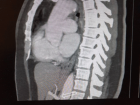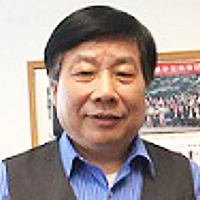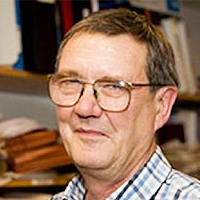Current Issue (Volume - 8 | Issue - 1)
Methodology for Studying Combustion of Solid Rocket Propellants using Artificial Neural Networks
Published on: 11th March, 2024
The combustion properties of energetic materials have been extensively studied in the scientific literature. With the rapid advancement of data science and artificial intelligence techniques, predicting the performance of solid rocket propellants (SRPs) has become a key focus for researchers globally. Understanding and forecasting the characteristics of SRPs are crucial for analyzing and modeling combustion mechanisms, leading to the development of cutting-edge energetic materials. This study presents a methodology utilizing artificial neural networks (ANN) to create multifactor computational models (MCM) for predicting the burning rate of solid propellants. These models, based on existing burning rate data, can solve direct and inverse tasks, as well as conduct virtual experiments. The objective functions of the models focus on burning rate (direct tasks) and pressure (inverse tasks). This research lays the foundation for developing generalized combustion models to forecast the effects of various catalysts on a range of SRPs. Furthermore, this work represents a new direction in combustion science, contributing to the creation of a High-Energetic Materials Genome that accelerates the development of advanced propellants.
A Study on Potential Feed Sources to Boost Guppy Fish, Poecilia reticulata Productivity
Published on: 2nd May, 2024
Aquaculture may simply be referred as “Underwater Agriculture.”India is a major maritime state and an important aquaculture- based country in the worldhaving major aquaculture activitiesin the production of Carp from Freshwater,Shrimp from Brackish water, etc. Feed requirements of fish vary in quantity and quality according to the feeding habits, physiological stages of the species and environmental variations viz., temperature; amount and type of natural food availability in the culture system.A nutritious and cheap feed is a pre requested for profitable aquaculture. Though, use of commercially available feed is in practice in many countries. The feed cost consumes more Than half of running expenditure. Therefore, the search of nutritionally well-balanced feed Prepared from very cheap locally available ingredients in progress in all the aqua farming countries. In the present study, an attempt has been made to well-balanced nutritious feed Particularly from the locally available cheaper ingredients. The objectives of the present study are: to assess the effect of feed on the growth of finfish and shellfish in the laboratory, to prepare the conventional feed with traditional ingredients and to check the effect of feed on the growth performance of ornamental fish - Guppy, Poecilia reticulata.
Using Isomets as a Foundation, a Connection Factor between Nucleation and Atomic Physics
Published on: 10th June, 2024
The radioactive isomer was initially used to characterize persistent excited atomic states, much like molecular isomers, more than a century ago. Otto Hahn made the first atomic isomer discovery in 1921. Subsequently, it was gradually discovered that there are several kinds of nuclear isomers, such as spin isomer, K isomer, seniority isomer, and “shape and fission” isomer. Isomers are essential to the nucleosynthesis of astrophysical materials. High-accuracy nuclear reaction rate inputs are anticipated while carrying out a celestial nucleosynthesis net computation, even though a single reaction rate can have a significant impact on the whole astronomical evolutionary network. The isotopes are often considered to be in their initial state or to have levels populated in accordance with the thermal-equilibrium distribution of chances when computing nuclear synthesis rates. After all, certain isomers may have lives that reach millions of years or perhaps beyond the age of the cosmos. Thus, in an astrophysics event, such isomers might not be thermally equilibrium. Some atomic isomers—that is, astrometry—should be considered special isotopes since they are crucial to nucleosynthesis. Nuclear batteries can also be produced using nuclear isomers. Similar to the weak force, in certain specific cases such as isomer decays, the electromagnetic force could be crucial for nuclear changes. It is important to note that radioactive isomer states and radioactive ground states are not the same thing. Durable nuclear states of excitement provide insight into the nuclear framework and potential uses. Atomic and molecular changes become interconnected when the connection to the electrons in atoms is made possible by the existence of em decay routes from isomers. Notably renowned chemical decay process is inner conversion. Its inverted, nuclear excitement by free capture of electrons has been observed; however, it is debatable and needs more investigation. This study describes the connection connecting radioactive and molecular changes and discusses instances of manipulating nuclear moves related to isomers using external electromagnetic fields.
Techno-econophysics’ Fractal Involving of Exergy Remarks
Published on: 4th September, 2024
Inclusively new to econophysics studies, herewith proposed technoeconophysics as part of techno-economy, econophysics & sociophysics to interpret the description between probability and hypothesis found between fractal realms and econophysics of markets, physics markets, or stock markets any chaotic evidence [exergy destructive] could present if effective & efficient criterion doesn’t comply. A more precise iterative study ought to be held to configure how fractal dimension is involved in the techno-econophysics study of the Helium Nat Gas Project which is not integer, but also proofed numerically & analytically.
Comparative Studies of Diclofenac Sodium (NSAID) Adsorption on Wheat (Triticum aestivum) Bran and Groundnut (Arachis hypogaea) Shell Powder using Vertical and Sequential Bed Column
Published on: 16th September, 2024
Wheat bran and groundnut shell powder have been used to study the mechanism of diclofenac sodium adsorption from aqueous solution using batch as well as column modes and maximum uptake is 84.3% for wheat bran and 82.4% for groundnut shell powder at pH 6, drug concentration 1mg/L at 298 K for 30min. Isotherm and error analysis reveals that Freundlich and Langmuir isotherms fitted well. Kinetic studies show that the adsorption process follows second-order kinetics and thermodynamic study shows endothermic adsorption process. Column adsorption study is important for industrial scale adsorption and column studies have been carried out using vertical bed and sequential bed adsorption columns at pH 6 which is the optimum pH for maximum adsorption for batch experiments. Vertical and sequential bed columns setup is simple and economical which provides flow under gravity. The effect of varying inlet feed concentration and flow rate on the breakthrough and exhaustion time of columns has been studied to determine the bed capacities of both columns. Thomas model and Yoon-Nelson models fitted well with experimental data for continuous flow column studies.

HSPI: We're glad you're here. Please click "create a new Query" if you are a new visitor to our website and need further information from us.
If you are already a member of our network and need to keep track of any developments regarding a question you have already submitted, click "take me to my Query."



















































































































































